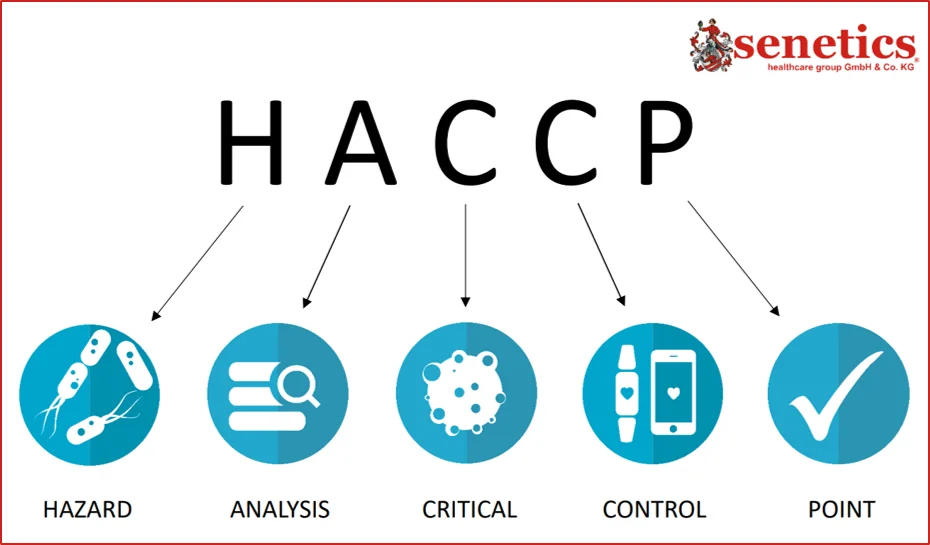HACCP Hazard analysis and critical control point, Uncategorized
HACCP Hazard analysis and critical control point
Hazard analysis and critical control points, or HACCP (/ˈhæsʌp/]), is a systematic preventive approach to food safety from biological, chemical, and physical hazards in production processes that can cause the finished product to be unsafe and designs measures to reduce these risks to a safe level. In this manner, HACCP attempts to avoid hazards rather than attempting to inspect finished products for the effects of those hazards. The HACCP system can be used at all stages of a food chain, from food production and preparation processes including packaging, distribution, etc. The Food and Drug Administration (FDA) and the United States Department of Agriculture (USDA) require mandatory HACCP programs for juice and meat as an effective approach to food safety and protecting public health. Meat HACCP systems are regulated by the USDA, while seafood and juice are regulated by the FDA. All other food companies in the United States that are required to register with the FDA under the Public Health Security and Bioterrorism Preparedness and Response Act of 2002, as well as firms outside the US that export food to the US, are transitioning to mandatory hazard analysis and risk-based preventive controls (HARPC) plans.[citation needed]
It is believed to stem from a production process monitoring used during World War II because traditional “end of the pipe” testing on artillery shells’ firing mechanisms could not be performed, and a large percentage of the artillery shells made at the time were either duds or misfiring. HACCP itself was conceived in the 1960s when the US National Aeronautics and Space Administration (NASA) asked Pillsbury to design and manufacture the first foods for space flights. Since then, HACCP has been recognized internationally as a logical tool for adapting traditional inspection methods to a modern, science-based, food safety system. Based on risk-assessment, HACCP plans allow both industry and government to allocate their resources efficiently by establishing and auditing safe food production practices. In 1994, the organization International HACCP Alliance was established, initially to assist the US meat and poultry industries with implementing HACCP. As of 2007, its membership spread over other professional and industrial areas.

HACCP has been increasingly applied to industries other than food, such as cosmetics and pharmaceuticals. This method, which in effect seeks to plan out unsafe practices based on science, differs from traditional “produce and sort” quality control methods that do nothing to prevent hazards from occurring and must identify them at the end of the process. HACCP is focused only on the health safety issues of a product and not the quality of the product, yet HACCP principles are the basis of most food quality and safety assurance systems. In the United States, HACCP compliance is regulated by 21 CFR part 120 and 123. Similarly, FAO and WHO published a guideline for all governments to handle the issue in small and less developed food businesses.

History
In the early 1960s, a collaborated effort between the Pillsbury Company, NASA, and the U.S. Army Laboratories began with the objective to provide safe food for space expeditions. People involved in this collaboration included Herbert Hollander, Mary Klicka, and Hamed El-Bisi of the United States Army Laboratories in Natick, Massachusetts, Paul A. Lachance of the Manned Spacecraft Center in Houston, Texas, and Howard E. Baumann representing Pillsbury as its lead scientist.
To ensure that the food sent to space was safe, Lachance imposed strict microbial requirements, including pathogen limits (including E. coli, Salmonella, and Clostridium botulinum).Using the traditional end product testing method, it was soon realized that almost all of the food manufactured was being used for testing and very little was left for actual use. Therefore, a new approach was needed.

